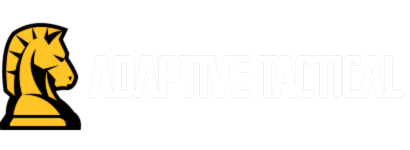FIRST LOOK: ADAPTIVE TACTICAL EX PERFORMANCE TACTICAL LIGHT FOREND BY SHOOTING ILLUSTRATED
by SHOOTING ILLUSTRATED STAFF posted on January 5, 2019
For many defense-minded firearm owners, a 12-gauge, pump-action shotgun is a go-to tool for home defense. When it comes to the pump-action, defensive shotguns, two models stand out above the rest: the Remington 870 and Mossberg 500 and its derivatives. Adaptive Tactical unveiled an add-on in late 2018 that's designed to enhance the utility of these shotguns in nighttime conditions: the EX Performance Tactical Light Forend.
“The addition of an integrated tactical light in the EX Performance line is an obvious step in expanding the capabilities of our products to include use in low-light conditions. This feature is especially important for our law enforcement and home defense customers,” said Gary Cauble, director of sales and marketing for Adaptive Tactical.
Designed to attach to any Remington 870, Mossberg 500, 590 or Maverick 88 shotgun chambered in 12 gauge, the Adaptive Tactical EX Performance Tactical Light Forend melds into the profile of these duty-ready platforms, providing a seamless, low-profile illumination tool mounted directly to the forearm. The pump-action handguard features textured ribs that ensure a solid, secure, non-slip gripping surface. The forward portion of the handguard includes two inches of Picatinny rail for mounting the included tactical light or other rail-mounted accessories. Don't want anything on your handguard? An included fore-end cap allows users to cover the rail when not in use.
The Adaptive Tactical light included with the forearm provides 300 lumens of bright area lighting and is powered by two included AA batteries, which powers the light for up to three hours. An ambidextrous on/off switch is easily reached by a user's support hand, and three modes are offered: momentary-on, constant-on and strobe. Each light is built with an impact-resistant polymer housing, and the light itself features a tempered-glass lens and an aluminum bezel. The housing itself is weatherproof, so users can be confident in the unit's operation, even in damp conditions. The light's quick-detach, thumb-screw rail clamp requires no tools for installation or removal.
Each Adaptive Tactical EX Performance Tactical Light Forend is made in the USA and retails at a suggested price of $129.99. Owners of the Maverick 88 must order a fore-end-slide assembly from Mossberg in order for the forearm to attach, though.
by SHOOTING ILLUSTRATED STAFF posted on January 5, 2019
Also in BLOG

Lost in the Wild: Avoid These 5 Fatal Mistakes
When you find yourself unexpectedly lost in a survivable wilderness setting, your chances of survival depend as much on your mindset as on your gear. Modern survival experts have seen it all from hikers who panic at the first sign of trouble to those who make impulsive decisions that cost them dearly. Here are the top 5 fatal mistakes people make when lost, and advice to help you avoid them.

8 Spring Cleaning & Maintenance Steps for Your AR-15
Spring is here, and it’s time to break out your AR-15 after those long, cold winter months. Whether your rifle was stored or saw some action during winter, a thorough cleaning and maintenance session is essential for peak performance. In true modern gunsmith style, here’s a rundown of eight critical steps to get your AR-15 ready for the warmer days ahead.

6 Reasons to Install a Forend Light on Your Home Defense Shotgun
When seconds count in a home defense scenario, every tactical advantage matters. Equipping your shotgun with a forend light isn’t just an accessory, it’s a critical enhancement that can improve your response time and overall control under low-light conditions. Below we explore six technical reasons to install a forend light on your home defense shotgun, complete with situational insights and pro tips to maximize your effectiveness.
